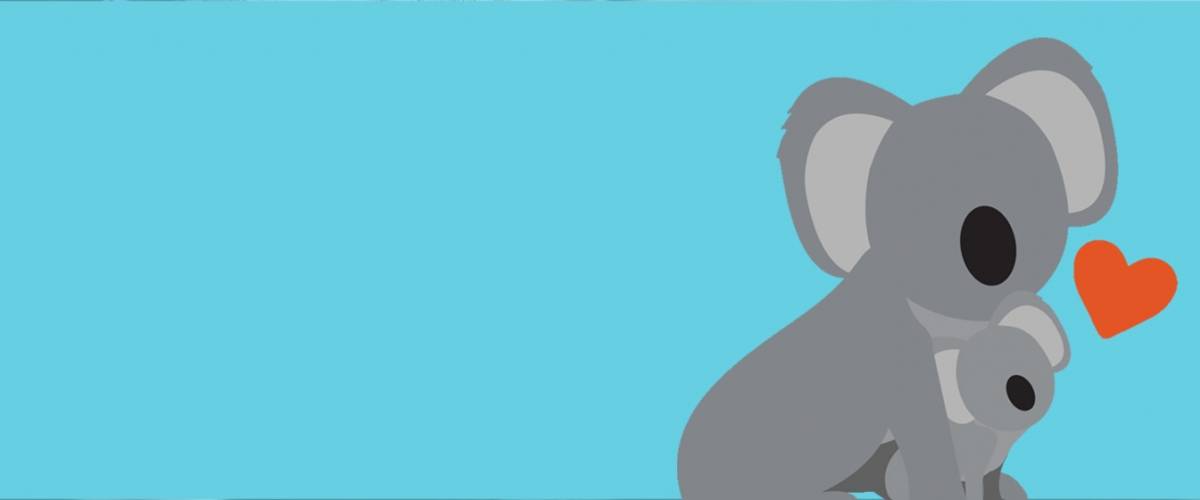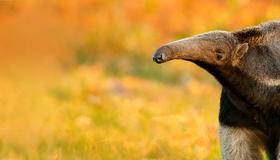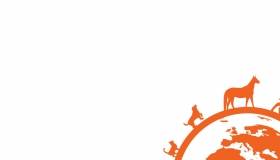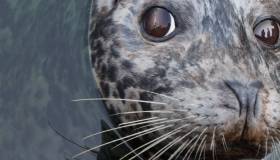
September 25, 2020 – Nearly two decades ago, Morris Animal Foundation was funding reproduction studies to address the overabundance of koalas and other Australian marsupials. Fast forward to today and researchers are trying to save koalas and keep them off the endangered species list. So, what happened to koalas in the last two decades?
Two primary reasons for the species’ collapse, in addition to many other contributing factors, are increasingly catastrophic bushfires in the places where they live and multiple diseases that have been spreading through koala populations taking a toll on their overall health.
Deadly Bushfires
The 2019-2020 bushfires were the most devastating wildfires yet for the koalas. One of the hardest hit regions was Kangaroo Island, where researchers estimate 80% of the koalas perished in the fires. And, while many of the remaining koalas were rescued from Kangaroo Island and other hard-hit areas, the staggering magnitude of animals that needed care was overwhelming.
To help animal caregivers, Morris Animal Foundation set aside $1 million in emergency funding for research into the rehabilitation and care of fire-affected Australian wildlife, including koalas. Our hope is if we give these facilities the tools they need to care for injured animals, more animals can be effectively treated and returned to the wild.
We started this journey with a discussion panel of veterinary experts who were experiencing first-hand the loss and overwhelming care of Australian wildlife during 2019-2020 bushfires. With their help and expertise, we were able to focus our funding efforts on what they needed most to help the thousands of animals across Australia that needed care, treatment and hope for a successful return to the wild.
Thanks to this collaborative effort, one project led by Australian researchers at the University of Adelaide focuses on reviewing and analyzing the large amount of clinical data collected on koalas during the 2019-2020 bushfires. Data will be gathered from multiple sources, including koala rescue groups and wildlife veterinarians who treated and cared for koalas from Kangaroo Island and other affected koala regions. The Adelaide team’s goal is to identify predisposing risk factors and prognostic indicators related to smoke inhalation and burn severity to improve the care of fire-affected koalas.
For koalas that were rescued from the impacted regions weeks later, the team’s analysis also will focus on conditions such as dehydration, starvation, stress and disease status. This new information will be invaluable for advising veterinary emergency response teams rescuing and caring for koalas, and other animals, impacted by future bushfires.
Koala Diseases
Before the deadly 2019-2020 bushfires, koalas also were struggling because of the growing threat of two diseases – koala retrovirus and chlamydia.
Koala retrovirus (KoRV) belongs to a group of viruses that are efficient at suppressing the immune system. One of the more well-known retroviruses in recent history is HIV (human immunodeficiency virus). Like people with HIV, koalas infected with KoRV are more susceptible to infections and disease.
In recent Foundation-funded studies, researchers found associations between KoRV and cancer in koalas, most notedly lymphoma. Other funded studies found KoRV coinfections compound clinical disease in koalas especially when they also are infected with sexually transmitted chlamydia.
Unlike humans, chlamydia can progress quite quickly in koalas. Chlamydial disease is very painful to koalas, causing eye infections leading to scarring and blindness. The disease also causes reproductive tract health issues; cysts in females cause pain on urination and can lead to reduced fertility.
Interestingly, not all koalas infected with chlamydia get severe disease. And, until recently, researchers did not know why. What they found with further study were two different strains of the retrovirus– KoRV-A and KoRV-B. In another recent Foundation-funded study, Australian researchers at the University of the Sunshine Coast discovered KoRV-B is a more virulent strain and strongly associated to chlamydial disease. What was additionally worrying over the course of the three-year study, is that the incidence of KoRV-B in their study group skyrocketed from around 20% to almost 90%. The disease quickly was becoming endemic in the population.
The Perfect Storm of Fire and Disease
In 2019, before the fires started, researchers were excited to announce they had found a disease-free population of koalas. This wild population was important in the race to save the koalas from chlamydia complicated by the growing threat of koala retroviruses. Sadly, this group of koalas lived on Kangaroo Island where the bushfires decimated the disease-free population.
To add to the problem, koalas saved from Kangaroo Island and other hard-hit areas were often treated with antibiotics for their injuries. But these same antibiotics are vital in the fight to effectively treat chlamydia in koalas until a vaccine is available, raising concerns about antibiotic resistance.
What isn’t known is how to ensure optimal antibiotic use in bushfire-affected koalas. Animal caregivers and veterinarians do not want to contribute to antibiotic resistance and reduced treatment efficacy for koalas that really need these drugs for chlamydia.
To help with this problem, Australian researchers from Macquarie University, with funding from Morris Animal Foundation, are gathering retrospective data documenting antibiotic use during the 2019-2020 wildfires in Australian wildlife with fire injuries. One focus is testing fire-affected koalas for the presence of antibiotic-resistant bacteria. The Macquarie team’s goal is to establish appropriate guidelines for antibiotic use in koalas, hopefully preserving efficacy of the much-needed antibiotics required to successfully treat chlamydial disease in the species.
Building Hope for Koalas
Morris Animal Foundation has funded koala health research for nearly two decades. We are committed to saving this iconic species. We also believe what we learn about koala health will improve the care of countless other marsupials impacted by bushfires. Emergency funding aimed at helping koalas, and other iconic Australia wildlife, will lead to new treatments and improved care for fire-affected animals in rehabilitation facilities. We want to see Australian wildlife thrive and survive as they did once before.
Learn more about our work to save Australian wildlife and other species around the world.




